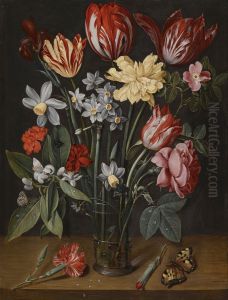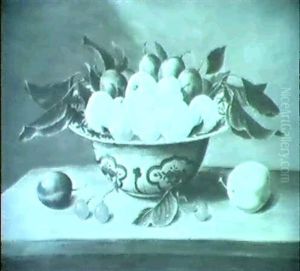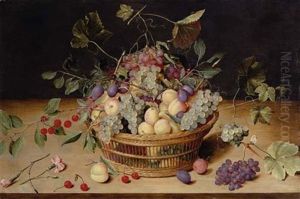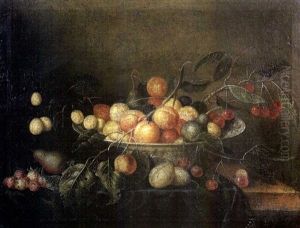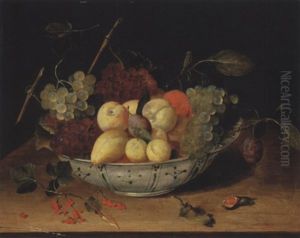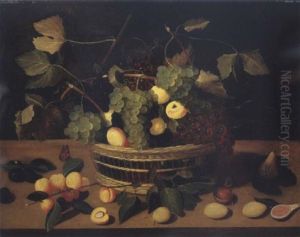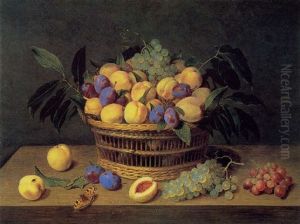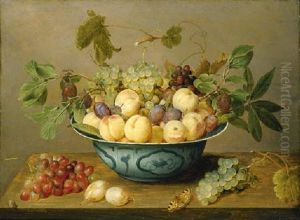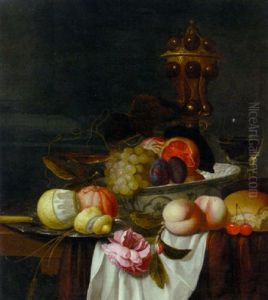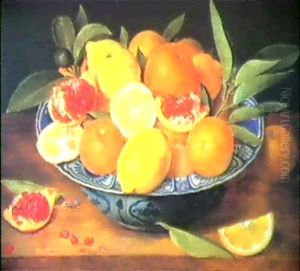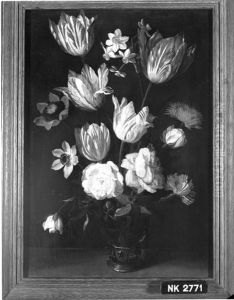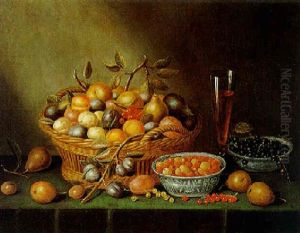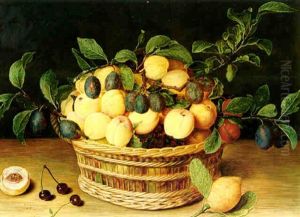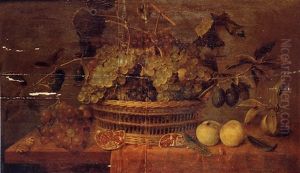Jacob van Hulsdonck Paintings
Jacob van Hulsdonck was a Flemish painter known for his skill in the still life genre, particularly for his detailed depictions of flowers and fruit. Born in 1582 in Antwerp, he was part of the Baroque period, which was characterized by vivid expression, detail, and the use of light and shadow. Van Hulsdonck's work is notable for its meticulous attention to the textures and surfaces of the subjects he painted, from the dew on a petal to the skin of a lemon.
Initially, van Hulsdonck may have been influenced by his stepfather, Hans van Noort, who was also a painter, though not much is known about van Noort's impact on his stepson's development. What is clear is that van Hulsdonck became a master in the Guild of Saint Luke in Antwerp in 1608, which was a significant professional milestone, indicating that he had completed his training and was recognized as a master artist by his peers.
Throughout his career, van Hulsdonck concentrated almost exclusively on still lifes, a genre that was gaining popularity at the time. His paintings often featured arrangements of fruit, sometimes accompanied by flowers, on wooden tables, with an emphasis on realism and the beauty of everyday objects. He was particularly adept at capturing the play of light on different textures and surfaces, creating images that were both realistic and visually rich.
Van Hulsdonck's paintings were sought after not only for their beauty but also for their symbolic content. During the Baroque period, still lifes often contained moral or religious messages, conveyed through the choice of objects and the manner in which they were depicted. For example, a rotting piece of fruit could symbolize the transient nature of life, while a glass of water could represent purity.
Jacob van Hulsdonck passed away in 1647, leaving behind a legacy that would influence later still life painters. His works are now held in various museums and collections around the world, treasured for their beauty and historical significance. As a painter, van Hulsdonck helped to elevate the status of still life painting, demonstrating the potential of this genre to convey both aesthetic pleasure and complex symbolism.



